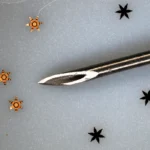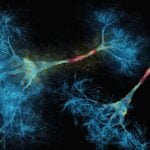SJ Claire Hur and Thomas Pisanic Receive Award to Develop Cell Separating and Editing Platform

Both a science and a technology, microfluidics offer promising solutions to diagnostic and therapeutic challenges in the medical field. By combining biology, chemistry, engineering, physics, nanotechnology, and more, microfluidics allows for the manipulation of cells and fluids at the nanoscale on small chips. That’s because at the nanoscale cell properties and characteristics behave differently.
Using microfluidic technologies, Soojung Claire Hur and co-investigator Thomas Pisanic are aiming to develop a microfluidic primary cell editing platform (pCEP) for personal gene therapy with a new award from the National Institutes of Health. Hur is the Clare Boothe Luce assistant professor of Mechanical Engineering and an associate faculty member at the Institute for NanoBioTechnology (INBT), and Pisanic is an assistant research scientist at the INBT.
Hur and Pisanic want pCEP to capture cells of interest and then deliver biological materials to edit their genome. First, the platform will integrate a purification method to separate and collect the cells from patient samples, like blood, which contain many types of cells. Then the platform will apply a voltage to open up the cells and deliver gene editing agents to activate or suppress genes in the cells.
The technology allows for cells to be separated and manipulated without touching them or tagging the cells with magnetic particles. Touching and using magnetic particles means you can separate cells to look at them, but it’s unlikely you can culture them, which is another long-term goal of the team. Culturing patient cells outside of the body can be difficult since they often die once they are taken from a patient’s body. Furthermore, cells can normally only divide a limited number of times before they become senescent and stop proliferating. But through genetic modifications it is possible to keep the cells dividing, making them available for further studies. Also, researchers can alter the genome of primary cells to provide additional functionalities to those cells to treat patients.
Hur and Pisanic’s work has potential applications to cancer biology, diagnostics, and immunotherapy. By using microfluidics, there is a potential to reduce medical costs and the time it takes to run tests. It is also offers safer alternatives for testing the efficacy of a therapy.
Story by Gina Wadas
Latest Posts
-
 Johns Hopkins Postdoc Named in Forbes `30 Under 30′ List
December 8, 2025
Johns Hopkins Postdoc Named in Forbes `30 Under 30′ List
December 8, 2025
-
 Micro Grippers: David Gracias Builds Micromachines That Fold, Stick, Swim, and Sense—All Inside the Human Body.
November 20, 2025
Micro Grippers: David Gracias Builds Micromachines That Fold, Stick, Swim, and Sense—All Inside the Human Body.
November 20, 2025
-
 A bold new approach to autoimmune diseases
November 19, 2025
A bold new approach to autoimmune diseases
November 19, 2025


